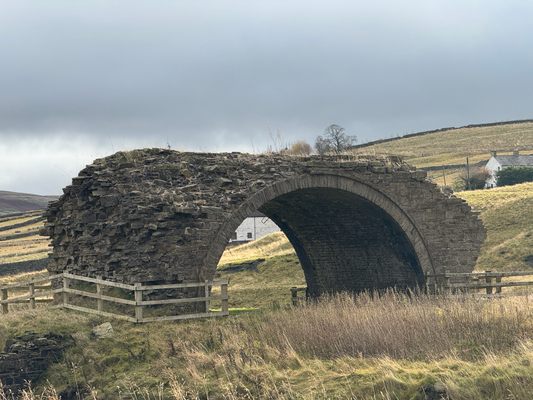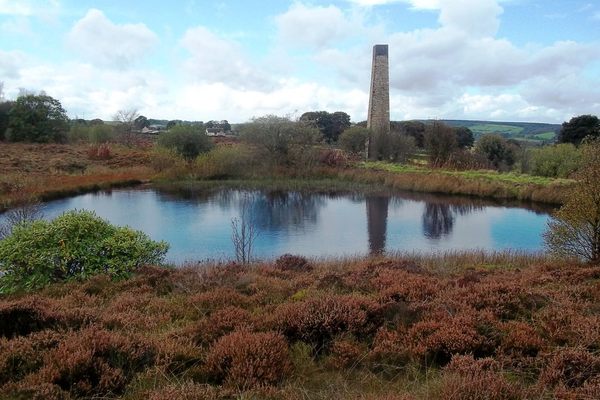About
The lone arch left at Rookhope is the only remaining feature of the buildings that were once Rookhope (or Lintzgarth) Smelt Mill.
The smelt mill was built in 1737 by the Blackett family and became the smelt mill for all the lead mines in Rookhope Valley, replacing an older mill farther up the valley at Groverake. The purpose of the mill was to smelt lead ore from the mines along the valley into bars of lead, known as "pigs." The mill had one roasting furnace, three ore hearths, and one slag hearth by 1821.
There was once a waterwheel to drive the bellows of the hearth. The lone arch was once one of six that carried a horizontal stone flue from the smelting hearths across the river and the road. The flue then ran underground as a tunnel for a mile and a half up the hillside where it then sprouted as a chimney stack high up on the moors. In the early 1800s, all the major smelt mills of the North Pennines had such contraptions, releasing their fumes into the air above the fells. While a common belief is that this was so the poisonous fumes were released far away from grazing land, the truth is that these were built purely for economic reasons.
The fumes and the smoke that traveled through the flue deposited lead on the inside of the flue. At intervals along the flue, there were doors where boys would be sent to scrape the lead deposits off the tunnel walls and collect them. A highly poisonous job. The small off-road car park is where one of the "fume tanks" was once situated, areas where water that flowed along the tunnels would wash lead.
The Weardale Lead Company took over the mill in 1883, a year later, it was expanded to include an extra roasting furnace and a reverberatory smelting furnace. A steep scramble up the hill across from the lone arch you can find the remains of the chimney flue.
Related Tags
Community Contributors
Added By
Published
February 8, 2022





























